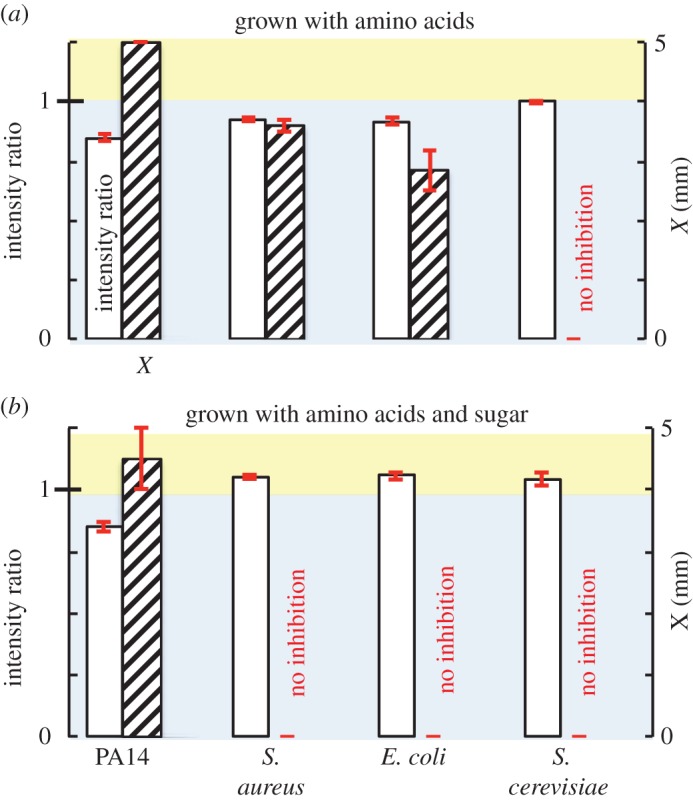Figure 6.

The carbon source used for growth can switch inhibition on or off. WT PA14, S. aureus, E. coli and S. cerevisiae were each grown in (a) LB medium, for which amino acids are the major carbon sources, and (b) YPD medium, which contains both amino acids and sugar as carbon sources. Following growth, cultures were deposited onto LB–tobramycin BTB agar and onto antibiotic-resistant mutant lawns on LB–tobramycin agar. (a) When grown on amino acids, the first three organisms produce both a BTB intensity ratio less than 1 and a zone of inhibition. The yeast S. cerevisiae produces no change in pH and no inhibition. (b) When grown in the presence of sugars, S. aureus, E. coli and S. cerevisiae ferment sugars and thereby produce an acidic change and no inhibition. WT PA14 catabolizes amino acids, causing an alkaline change and inhibition. Sterile LB and YPD media, and filter-sterilized culture supernatants, produce no BTB colour change and no inhibition (electronic supplementary material, figures S28 and S29). (Online version in colour.)
